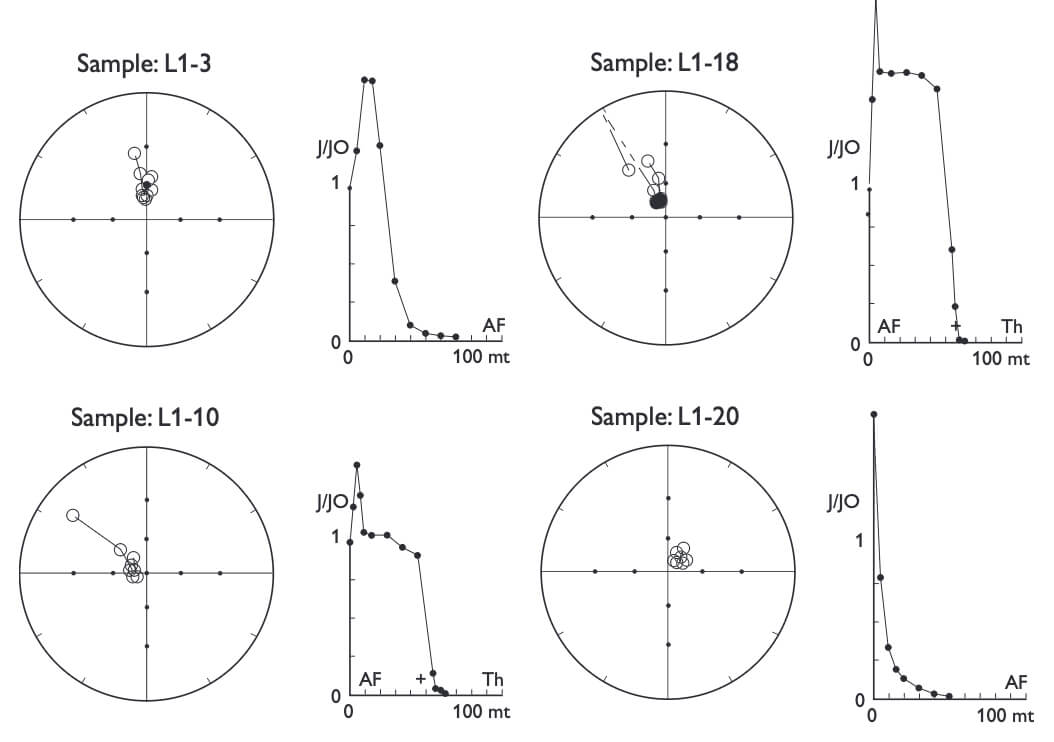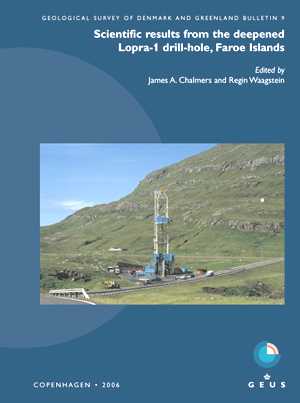
How to Cite
Share
Abstract
The palaeomagnetic dating and evolution of the Faroe Islands are discussed in the context of new density and rock magnetic results from the deepened Lopra-1/1A well. The reversal chronology of the c. 6½ km thick basalt succession is also described. The polarity record of the Faroe Islands may now be correlated in detail with the Geomagnetic Polarity Time Scale. The lowermost (hidden) part of the lower basalt formation correlates with Chron C26r (Selandian age), the top (exposed) part of the lower basalt formation correlates with Chrons C26n, C25r and C25n (Selandian and Thanetian age) and the middle and upper basalt formations correlate with Chron C24n.3r (Ypresian). Inclinations indicate a far-sided position of the palaeomagnetic poles, which is characteristic of results from most Palaeogene volcanics from the northern North Atlantic region. The density, magnetic susceptibility and magnetic remanence of 20 specimens from one solid core (1½ m in length) and 26 sidewall cores from the well between –2219 and –3531 m below sea level (b.s.l.) suggest that the volcanic materials can be divided into two characteristic groups: solid unaltered basalts and altered basalts and tuffs. The magnetic properties are typically log-normally distributed and the carriers of remanence are Ti-poor Ti-magnetites with Curie temperatures close to 580°C. The inclination of the 1½ m core at 2380 m b.s.l. is dominantly negative (two plugs at the very top of the core do show normal polarity, but they are likely to be misoriented as all specimens appear to be from one flow). Magnetic logging (magnetic susceptibility and field intensity) down to 3515 m b.s.l. was made in Lopra-1/1A together with other geophysical logs but did not yield conclusive inclination data.
How to Cite
Share
Downloads
Editors: James A. Chalmers and Regin Waagstein
The Faroe Islands in the northern North Altantic consist primarily of Palaeogene eruptive volcanic rocks. Two research boreholes were drilled in 1980 and 1981 on the islands, the deeper of which, Lopra-1, extended 2 km into the unexposed part of the volcanic succession.
Exploration for [...]










